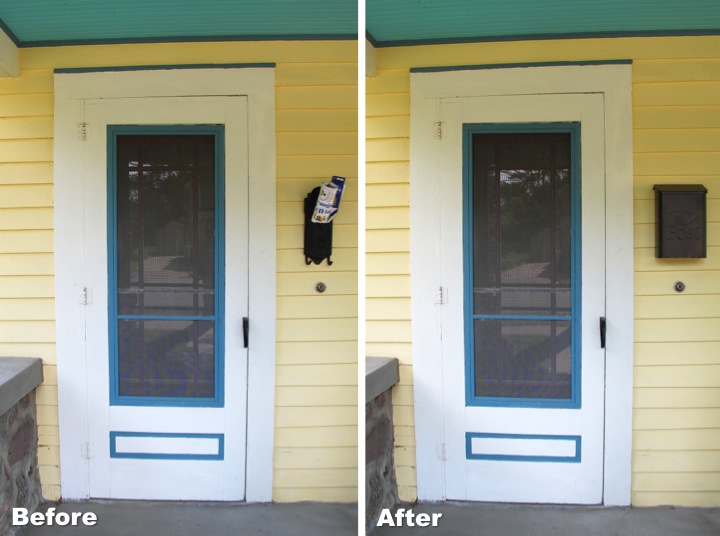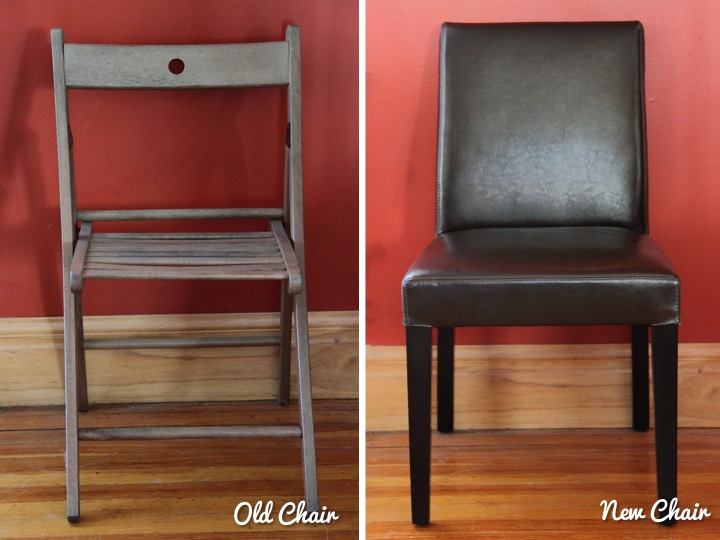Since I am still not feeling the best I've been tackling some small projects around the house. I am missing my power tools but it's still good to be making a bit of progress, albeit slowly.
Last weekend one of the little projects was swapping out some of the switches in the living room. With the new living room light being so bright now it seemed like a good idea to put it on a dimmer for times when it was a little overwhelming.
When I work on the electrical in my house instead of just shutting off the circuit breaker for what I am working on I like to shut off the main breaker on my panel just to be on the safe side. I took off the switch panel and then removed the screws that hold the switch into the electrical box.
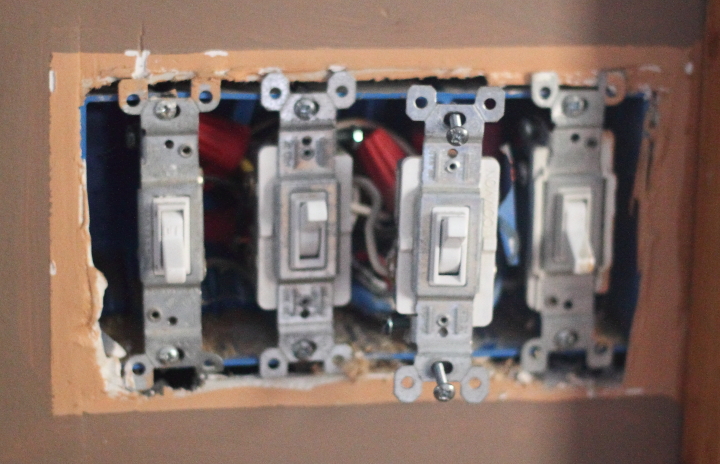
The switch I was replacing was a three way switch. I am not going to go into great lengths about three way switch wiring, but if you are replacing one it is really important to take note of which wire is connected to the common screw and which ones are connected to the travellers before you disconnect the wires. The common screw is easy to identify because it is a different color from the others, usually black of copper. Here is my new three way switch with the screws labeled.
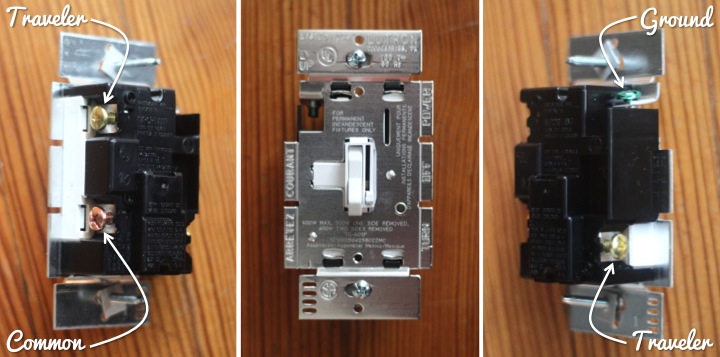
There are different ways to wire up a three way switch, depending on how many lights are involved and the order in which you wire everything up, but here is a simple way to think about it to understand why you want to keep the wires straight. The power is coming into (or out of) the switch at the common screw and the travelers are two lines between them. When you toggle one of the three way switches you are either connecting the power by having the switches toggled to the same traveler wire or disconnecting the power by having them connected to opposite travelers.
After I removed the wires from my old three way switch, I reattached them to my new switch, making sure to attach the wire that was attached to the old common screw to the new common screw. Super easy!
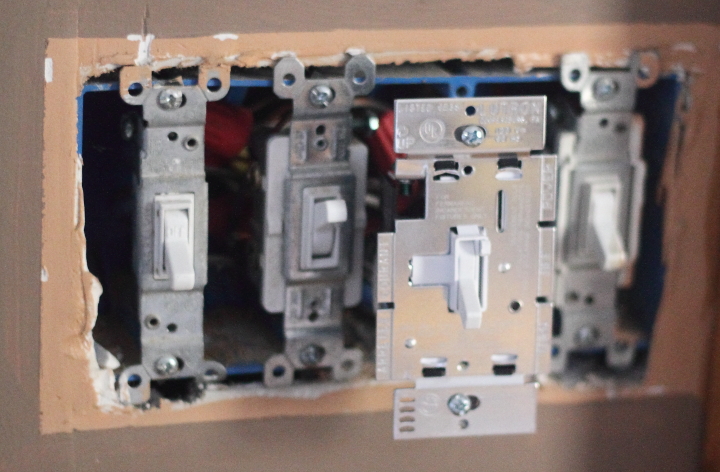
The dimmer I got has a slider next to the toggle switch so I can set a brightness level that I like and switch it on and off. It is really nice to have this convenience and now I am thinking I need to add a dimmer for the dining room light...
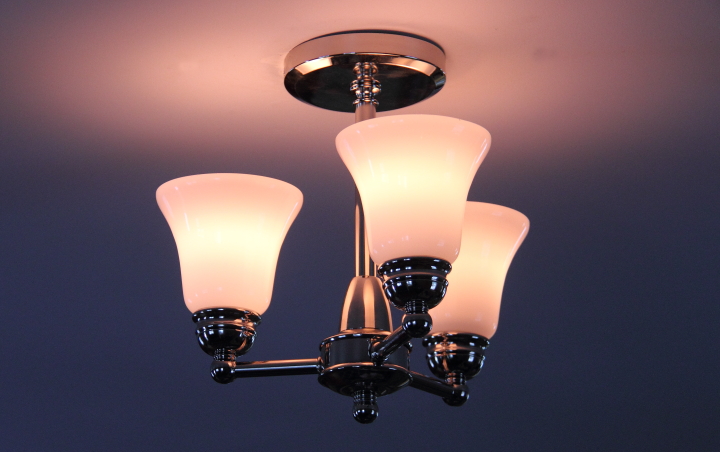
Next up was adding a wireless motion detector to my front porch light. Living alone, I like to come home with my front porch light on. Since I work a lot of late nights that meant that I was leaving my light on all day which really wasn't the best plan. I saw this wireless motion detector and thought it would be just the thing for me.
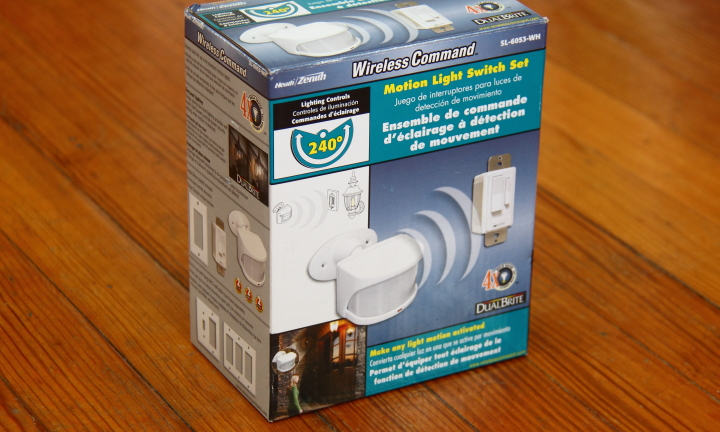
The kit consists of two parts, a detector and a switch with an antenna and receiver. The installation was fairly simple. Frank mounted the detector in the corner of my front porch for me while I swapped out the old switch with the new receiver switch.
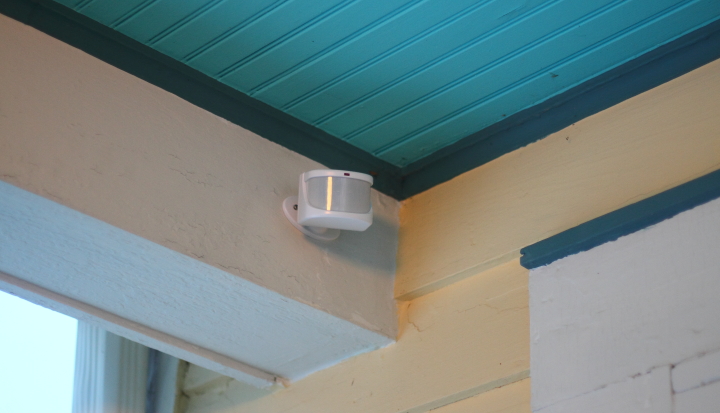
The system works great. It has a setting where it will come on half power at dusk and stay on like that for three hours. If it detects any motion it comes on full power. At first we thought it wasn't working because it seemed to be on a lot, but then we realized that we needed to reduce the range since it was picking up cars that were driving down the street. I really like it and wish I had installed it sooner.
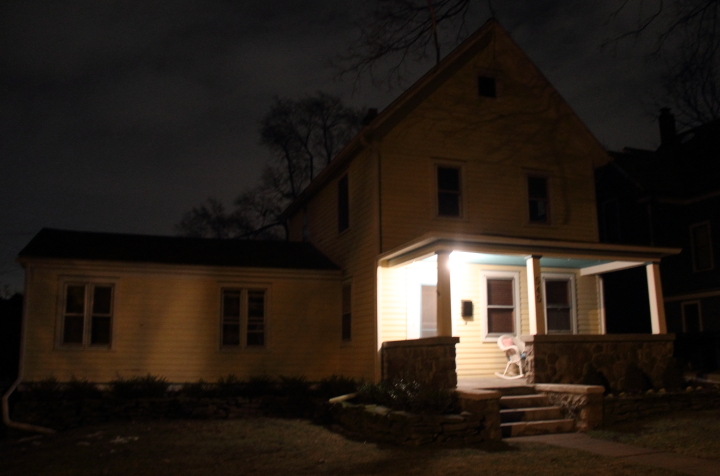
The last item to cover is the switch cover. I've never seen a four gang switch plate with a single decora opening on the left and three toggle switch openings so I wasn't exactly sure what to do. I found these snap together switch plates so I decided to use them to make the switch plate I needed.
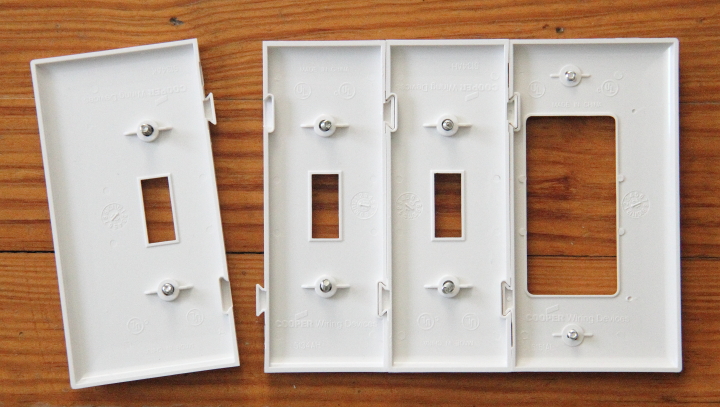
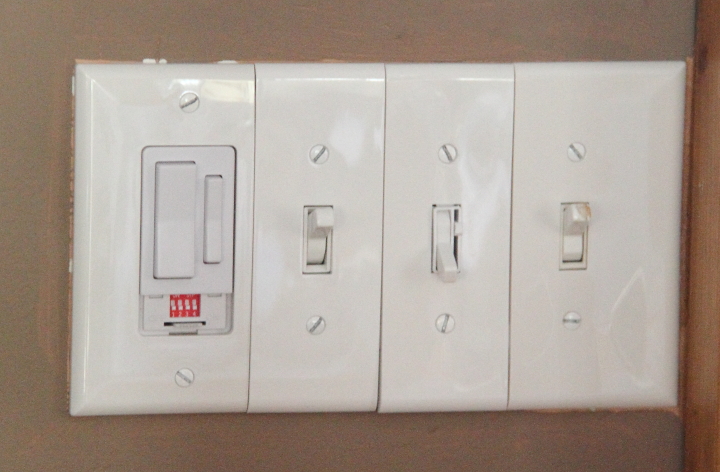
I have to say that although it meets my needs right now I am not crazy about it, since the seams are super obvious. At some point down the line I'll make something that looks nicer, but for now it is okay. It's a small price to pay for having a dimmable living room light and a motion sensor for my porch light.

 Monday, October 27, 2014 at 7:21AM
Monday, October 27, 2014 at 7:21AM



